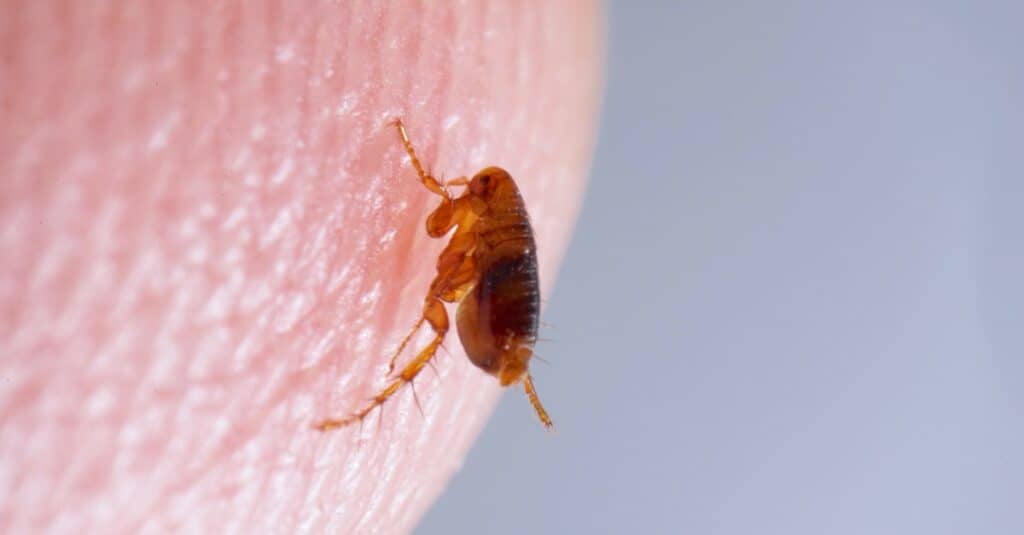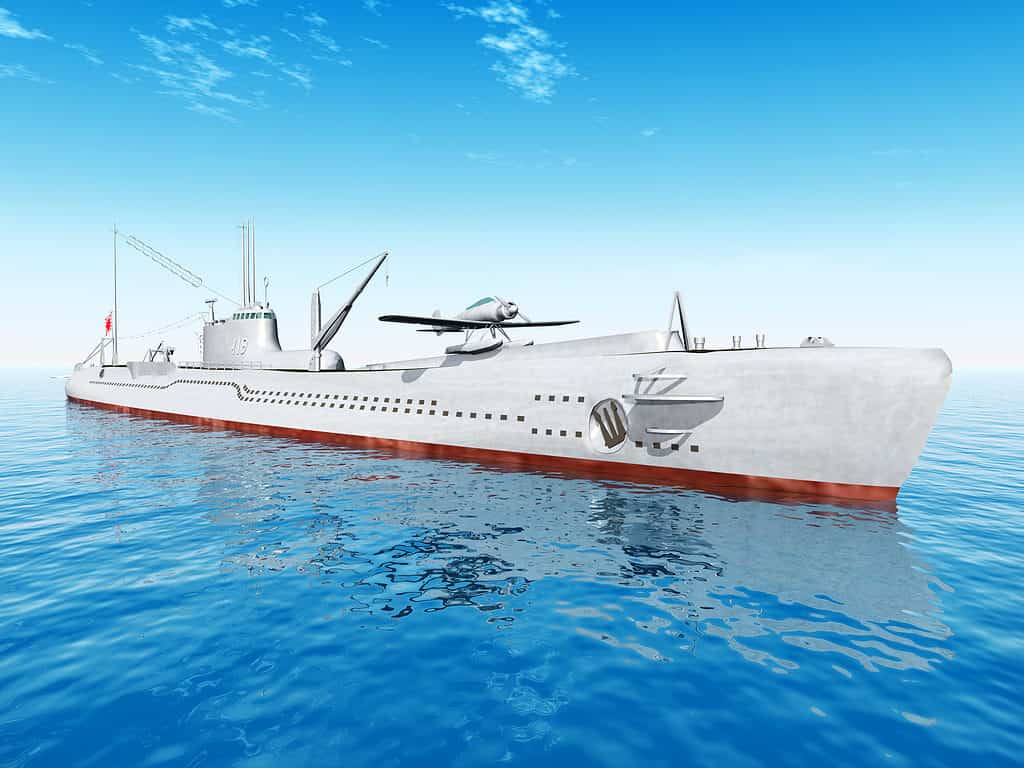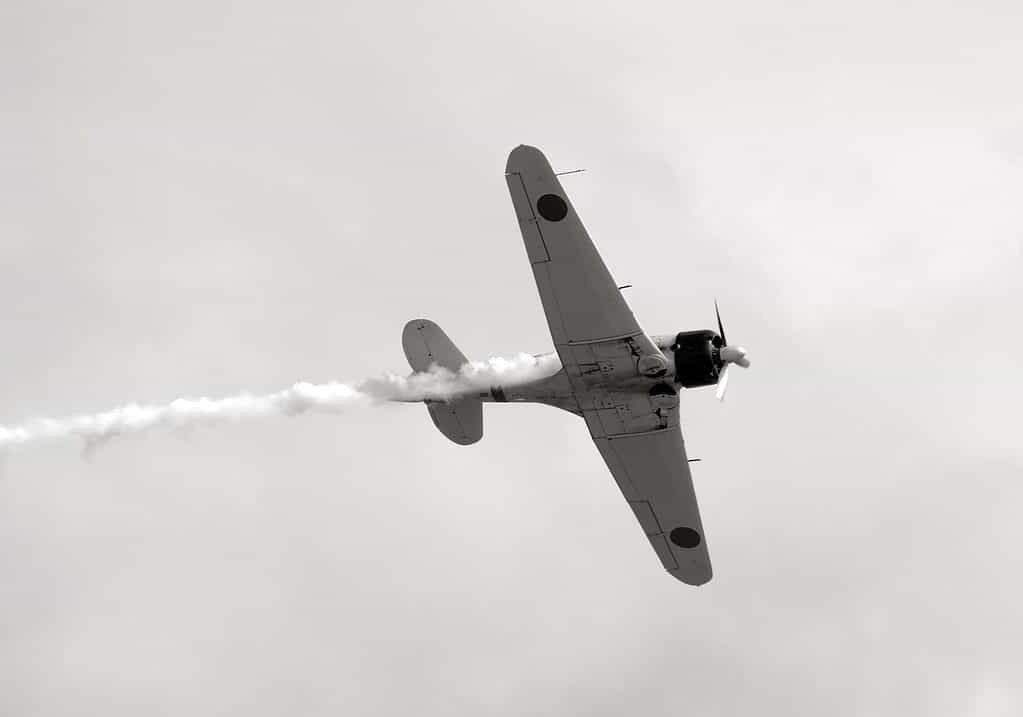If nothing else, humans are innovative. Sadly, many of our greatest ideas are centered on ways to end the lives of others. In the waning months of World War II, some Japanese military officials devised a desperate plan to counter the encroaching U.S. military. The idea was to unleash biological warfare on the shores of the United States by dropping plague-infested fleas into San Diego and unleashing other massive, potentially irreparable outbreaks of horrible diseases like bubonic plague, typhus, cholera, and others.
Today, we’re going to look at Operation PX, examine the potential outcomes had it been carried out, and show you why it never happened.
What Was Operation PX?
Operation PX is also known by the name Operation Cherry Blossoms at Night. The basic concept of the attack was to use submarines carrying a variety of infectious diseases to get close to the shores of the United States.
Once they were in place, the submarines would launch seaplanes loaded with plague-infested fleas containing weaponized variants of bubonic plague or other biological agents. Those planes, painted in the colors of the U.S. military, would then drop bombs on cities such as San Diego, Los Angeles, and San Francisco.
The lack of explosions from these bombs would certainly confuse and bewilder those below. No powerful explosions would occur, though. In fact, the attack may go relatively unnoticed at first. The people wouldn’t know that the planes just unleashed fleas capable of spreading a highly communicable, deadly disease.
Afterward, the individuals aboard the submarines would infect themselves with deadly biological agents and storm the beaches to kill and infect as many people as possible.

©iStock.com/S.Rohrlach
Devising Operation PX
Operation PX was conceived during the waning days of World War II. Of course, when Japanese officials finalized the plans in March 1945, they had no idea that the war was ending a mere five months later after the first nuclear weapons were dropped.
The plan was first proposed in December 1944 by officials in the Japanese Navy led by Jisaburō Ozawa. However, the Japanese navy lacked the tools to make this attack work on its own. Instead, they turned to the now-infamous Unit 731, overseen by Lieutenant-General Shirō Ishii.
Unit 731 had been working on biological and chemical weapons since the 1930s. By the 1940s, they had developed weaponized bubonic plague and a host of other biological agents.
In a sense, Japan had already carried out a test run of Operation PX during the Kaimingjie germ weapon attack. This bombing occurred in October 1940. The attack occurred in Ningbo, a port located in the Chinese province of Zhejiang.
The Japanese military dropped plague-infested corn, wheat, sand, and other materials into the area, resulting in roughly 100 deaths. After doctors diagnosed the disease, affected parts of the city were quarantined and later destroyed to prevent the spread of the plague.
The Japanese dropped the plague on the city again, but few sources exist to tell of the impact.

©iStock.com/MR1805
What Does the Bubonic Plague Do?
The bubonic plague is known for killing about 1/3 of the European population starting in 1347. This was called the Black Death.
The plague leads to flu-like symptoms of fever, chills, and malaise. However, it quickly progresses to swollen lymph nodes, called buboes. These often appear near the site where the person contracted the disease, typically via bite or scratches. Also, the individual may develop gangrene of the extremities along with a host of other problems.
The individuals suffering from the plague will feel immense levels of pain as their buboes become infected and swell. They may vomit blood, suffer from organ failure, or slip into a state of delirium. The combined effects of the plague often kill the infected person.
Plague most often spreads through contact with rats and their plague-infested fleas, like those that would be air-dropped into the U.S. by Operation PX. However, some variants of plague spread from breathing in respiratory droplets.
Without treatment, the plague has a case-fatality ratio between 30% and 100%. Needless to say, bubonic plague has the potential to wreak havoc on human settlements.
Would the Plot to Use Plague-Infested Fleas Work?
The plan to bomb San Diego and other cities with plague-infested fleas never came to fruition. However, we have to consider whether it would have been successful if Japan had signed off on it. Given that this dimension of war had not been unleashed before, it may have caught the cities off guard.
The ceramic bombs carrying plague-infested fleas had already worked against people in China. Yet, we don’t know to what degree they worked or how many people died as a result of the bombings. We can’t confuse the flea bombing figures for the deaths during the test phases that numbered in the hundreds of thousands.
Given that the population of Los Angeles had already exceeded 1 million people in 1945 and the other two cities counted for nearly another million, the impact could come down to population density.
Granted, the plague fleas were just one aspect of the attack. Other biological weapons would be dropped into the mainland U.S. too.
Fortunately, we’ll never know if the attack would have worked or what the overall impact would have been. Given the population and density in those cities, it seems that the number of deaths could have easily reached the thousands.

©iStock.com/icholakov
What Stopped Japan from Dropping Plague-Infested Fleas into America?
Japan never followed through with Operation PX. The Chief of General Staff Yoshijirō Umezu was against the attack, saying:
“If bacteriological warfare is conducted, it will grow from the dimension of war between Japan and America to an endless battle of humanity against bacteria. Japan will earn the derision of the world.”
That suggests that the biological weapons would have reached pandemic levels. Moreover, neither the U.S. nor its allies would be able to control the diseases once they have started spreading. For that, Japan would become an even greater outcast in the global community.
The war officially came to an end on September 2, 1945. Japan surrendered after two nuclear weapons were dropped on Hiroshima and Nagasaki.
The operation was almost carried out again during the occupation of Japan following World War II. The goal was to use suicide attacks to infect U.S. soldiers. However, this never came to fruition, either.
Up Next:
- The Deadliest Shark Attack in Human History
- 10 Animal War Heroes
- See 76 Beavers Fly Into Idaho Wilderness Using World War 2 Parachutes
- Discover the Largest Crocodile Attack in Human History (500+ Died)
The post Discover the WW2 Plot to Bomb San Diego with Plague-Infested Fleas appeared first on AZ Animals.
from Animal News, Facts, Rankings, and More! - AZ Animals https://ift.tt/ctg8r9Q